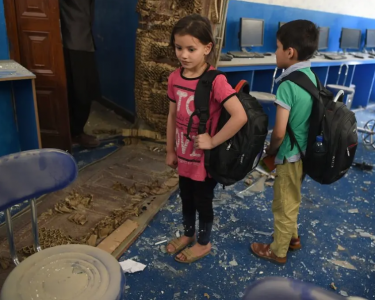ISLAMABAD, Feb 15 (NNN-AGENCIES) — Fighting “fake” news, wrestling with social media, and deploying an intern army – the Taliban’s sprawling propaganda machine embraces modernity even as the group vows to enforce extremist controls on journalists if it returns to power.
Notorious for banning TV and radio under its iron-fisted 1996-2001 regime, the militants have proven surprisingly deft at adapting to the ever-changing nature of modern media.
The Taliban’s official spokesman now tweets real-time updates about battlefield operations and its media arm stays in direct contact with journalists on a range of messaging apps.
“Media is considered one side of the struggle,” Taliban spokesman Zabihullah Mujahid said via Whatsapp.
“We are not against modern technology,” a senior Taliban source with links to the insurgents’ media wing said.
“This is the need of the hour and using it is not against Islamic shariah.”
But the source admits his team struggles at times to control their own narrative.
High-profile interviews have taken place without the media wing’s knowledge, sparking hurried denials along with confusion over the identity of the interviewee and whether he can really claim to speak for the Taliban.
Unverified leaks to media outlets from alleged Taliban sources are frequent.
Fake or unauthorised accounts sprout often on social media, while their official Facebook pages and Twitter handles are regularly banned only to be restarted under another name.
Even the official spokesman, Mujahid, is widely believed to be not one man but a moniker used by the information wing to issue statements.
The operation can be dizzying, admits the Taliban source.
The increasingly refined production has not gone unnoticed, with NATO regularly briefing top officials on Taliban content.
“It gives us an idea of what the group is thinking about that day,” said Colonel Knut Peters, spokesman for NATO’s Resolute Support mission in Kabul.
The casualty figures they release are often wildly exaggerated, but the group has been known to describe their operations more accurately, with fewer outlandish battlefield claims.
The Taliban work across five different language services – Pashto, Dari, English, Urdu and Arabic – with dozens of volunteers who produce multimedia content.
Print magazines target rural audiences without mobile phones, while slick propaganda videos and songs reach the illiterate.
The army of interns include journalism school students, along with IT experts who monitor the latest trends, the source claimed.
“They are servants of God, volunteers,” he said.
In the 17 years since the US invasion, Afghanistan’s media has flourished.
The extremists maintained strict control over media during their brutal rule. Most foreign journalists fled the country, while Afghan reporters often worked undercover for fear of being violently harassed or accused of spying.
But their success has made them targets, starting in 2016, when the Taliban killed seven employees of popular TV channel Tolo – the first major attack on Afghan media since 2001.
Journalists have faced killings, attacks and abductions. In 2018 Afghanistan was ranked the most dangerous country for journalists in the world.
Meanwhile unprecedented talks between the Taliban and Washington have sparked fears of a potential US exit and a possible return to power for the insurgents.
The Taliban source said the group has no wish to shutter Afghan outlets – but journalists would have to comply with an unspecified “code of conduct” in line with Islamic shariah.
Female anchors, common in Afghanistan today, would not be allowed on camera.
But foreign media would be welcomed, he claimed, unlike in the past. — NNN-AGENCIES





